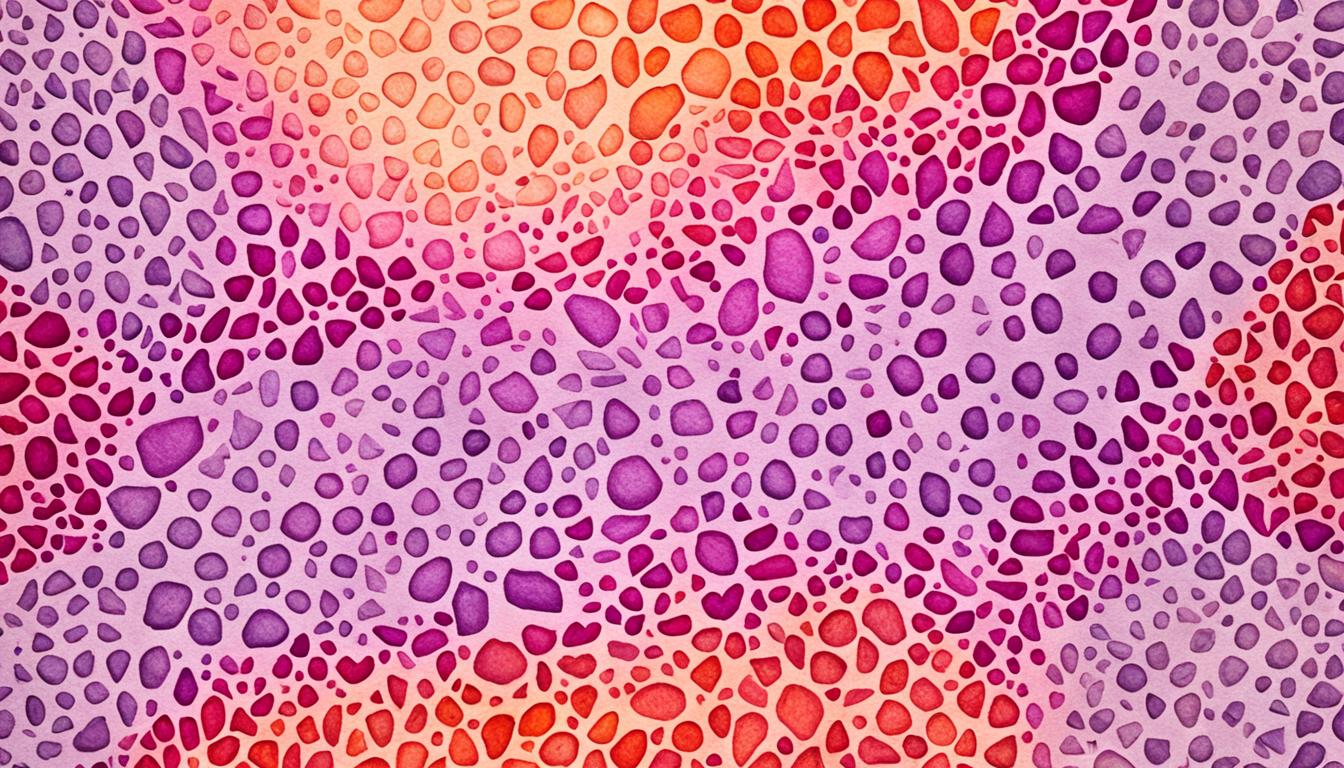Fibrocystic breast disease is a common issue for middle-aged women. It causes lumps in the breasts and pain. Hormonal changes are often the cause.
Common signs are breast pain before periods, lumps, and tenderness. Swelling and dark nipple discharge might also happen. These signs can make life harder for a woman.
To find it, doctors use different tests. They do a breast check, ultrasound, and sometimes a biopsy. Mammograms and MRIs help see the breast tissue.
Treatment varies depending on how bad the symptoms are. Options include drugs or even surgery. But, stem cell therapy shows promise. It helps repair breast tissue.
Key Takeaways:
- Fibrocystic breast disease affects many middle-aged women.
- Symptoms often include breast pain, lumps, and tenderness.
- To diagnose it, doctors perform tests like breast exams and MRIs.
- Doctors treat it with medication, surgery, or stem cell therapy.
- Staying alert and getting regular checks can help manage the disease.
Symptoms and Diagnosis of Fibrocystic Breast Disease
Fibrocystic breast disease brings symptoms that can worry and discomfort women. It’s key to know these symptoms and get the correct diagnosis for effective care and treatment.
Symptoms of Fibrocystic Breast Disease
Cyclic breast pain is a major symptom. It often starts 8 days before a woman’s period and might go away after. This pain is not usually linked to breast cancer.
Breast lumps or uneven areas in the breasts are other signs. These areas can feel hard or like rubber and come in different sizes. There might also be tenderness and swelling.
In some rare cases, a brown discharge might come from the nipple. If this happens, it’s crucial to see a doctor about it.
Diagnosis of Fibrocystic Breast Disease
Diagnosis involves a thorough check and tests. A healthcare provider will examine the breasts for any unusual changes.
An ultrasound can show if there are any fibroids. This gives detailed breast tissue images for accurate diagnosis.
Another test is fine needle aspiration cytology. It takes a small breast tissue sample for examination, often to look for early cancer signs.
Mammograms help find breast cancer early. They use X-rays to make detailed breast images for healthcare providers to check for any issues.
Resonance imaging may also be used for a detailed breast examination.
Diagnosing early and visiting doctors regularly is important for fibrocystic breast disease. If any of these symptoms happen to you, see a doctor for proper diagnosis.
| Treatment | Description |
|---|---|
| Breast Lump Treatment | Treating breast lumps may involve medication to ease pain. Surgery might be needed for stubborn lumps. |
| Breast Cyst Management | Managing breast cysts includes monitoring and medication. Regular doctor visits are crucial for proper management. |
Treatment and Prevention of Fibrocystic Breast Disease
Treatment for fibrocystic breast disease focuses on symptom management. It’s key to consult with a healthcare professional for the right advice. Things like ibuprofen and acetaminophen can ease breast pain and are easy to get without a prescription.
Vitamin E supplements and changes in what you eat may also help reduce symptoms. It’s wise to keep a balanced diet and cut down on caffeine and salt. A proper-fitting bra supports your breasts well, which can be good for your breast health.
It’s essential to check your breasts often on your own and get a doctor’s check-up once a year. While this disease doesn’t mean you’ll get breast cancer, you should see a doctor about any new lumps. They can make sure it’s not something more serious.
Following these hints for breast health and getting the right medical care can help a lot. People with fibrocystic breast disease can keep their symptoms under control. This approach also lowers the risk of facing more health issues, which helps overall.
FAQ
Q: What are the symptoms of fibrocystic breast disease?
A: Fibrocystic breast disease causes cyclic breast pain. You might also feel lumps in your breasts. They can be tender and swell. Plus, there could be some discharge from the nipple.
Q: How is fibrocystic breast disease diagnosed?
A: To diagnose fibrocystic breast disease, the doctor will do a few tests. This might include a breast exam and ultrasound. They may also use a fine needle to take a small sample from the breast. Mammography and resonance imaging could also be needed.
Q: What are the treatment options for fibrocystic breast disease?
A: Treating fibrocystic breast disease is about managing symptoms. Options include medication and lifestyle changes. It’s also crucial to have regular check-ups with your doctor.
Q: Can fibrocystic breast disease lead to breast cancer?
A: Fibrocystic breast disease does not mean you will get breast cancer. But, it’s vital to check any new lumps or changes with a doctor. They can make sure there are no serious issues.

